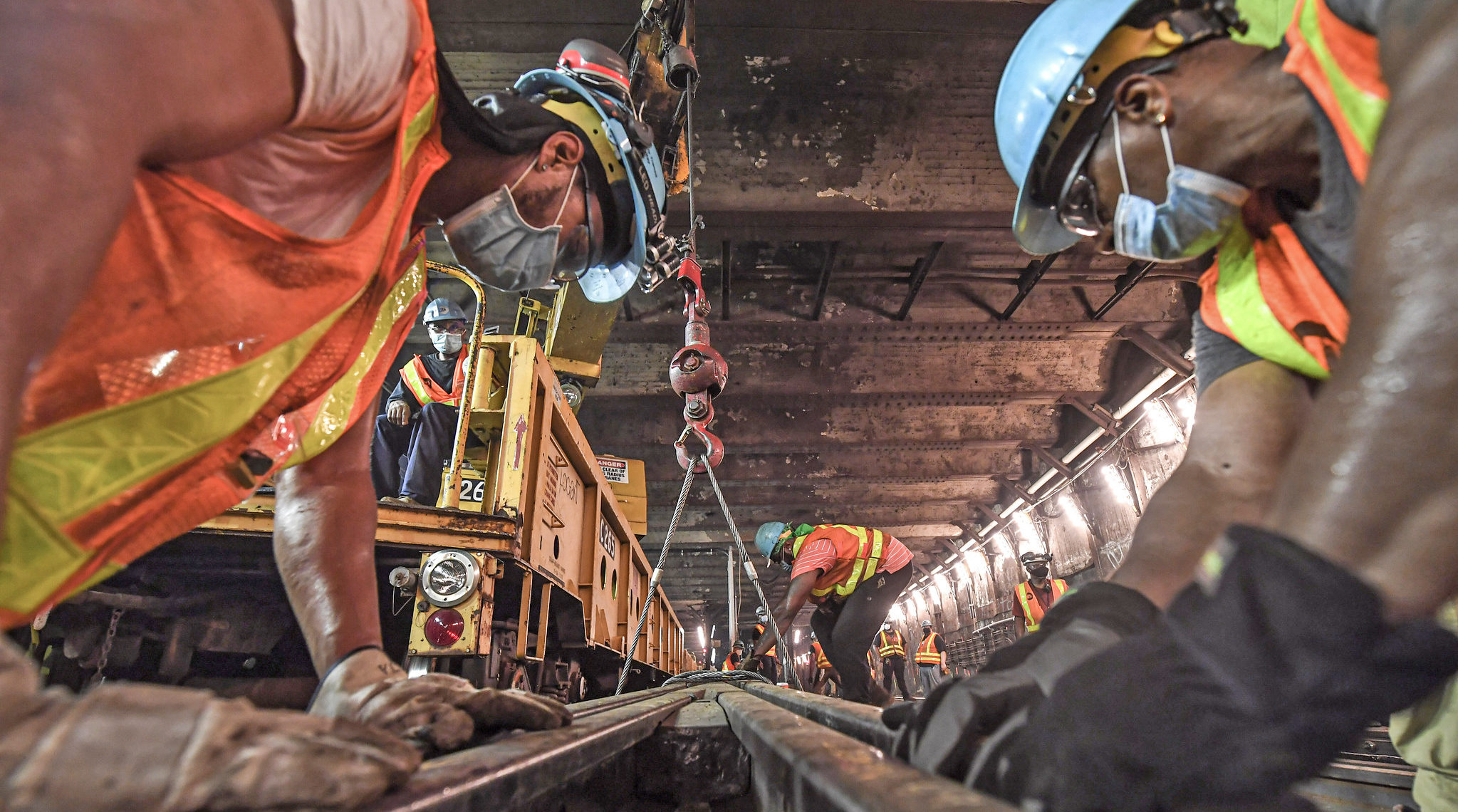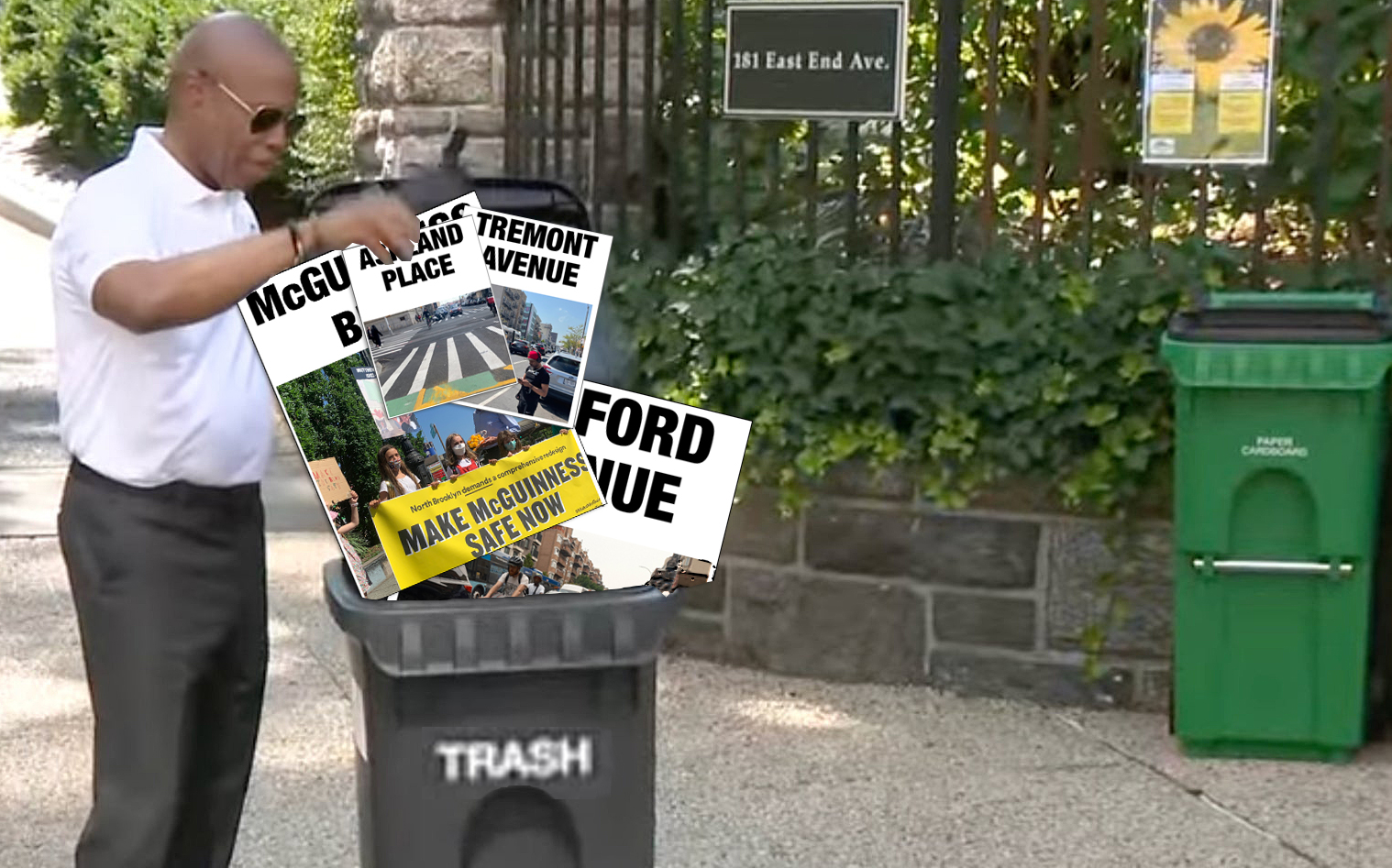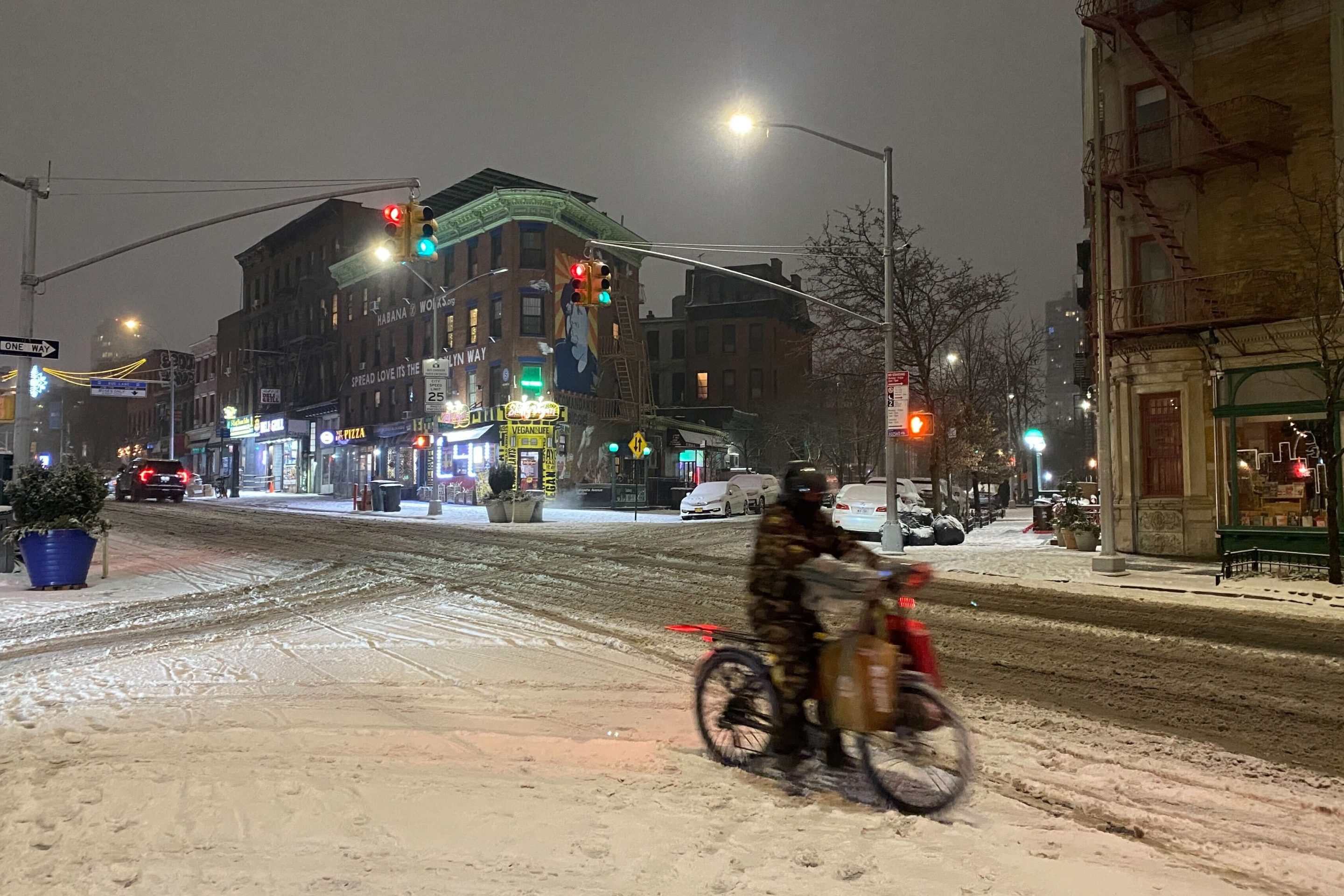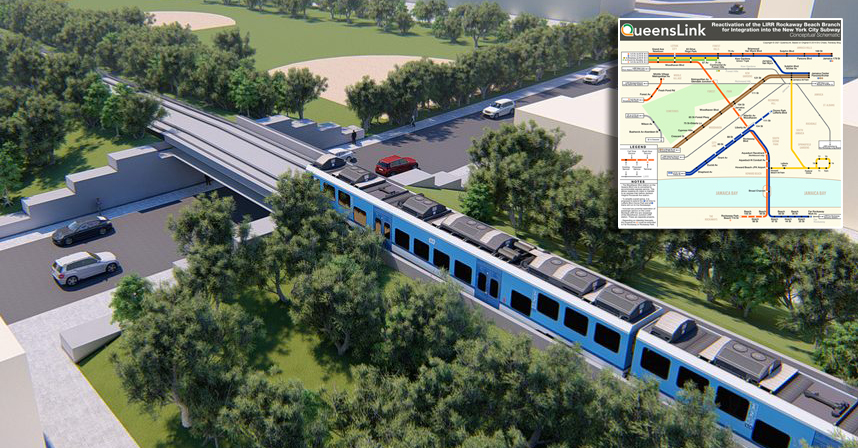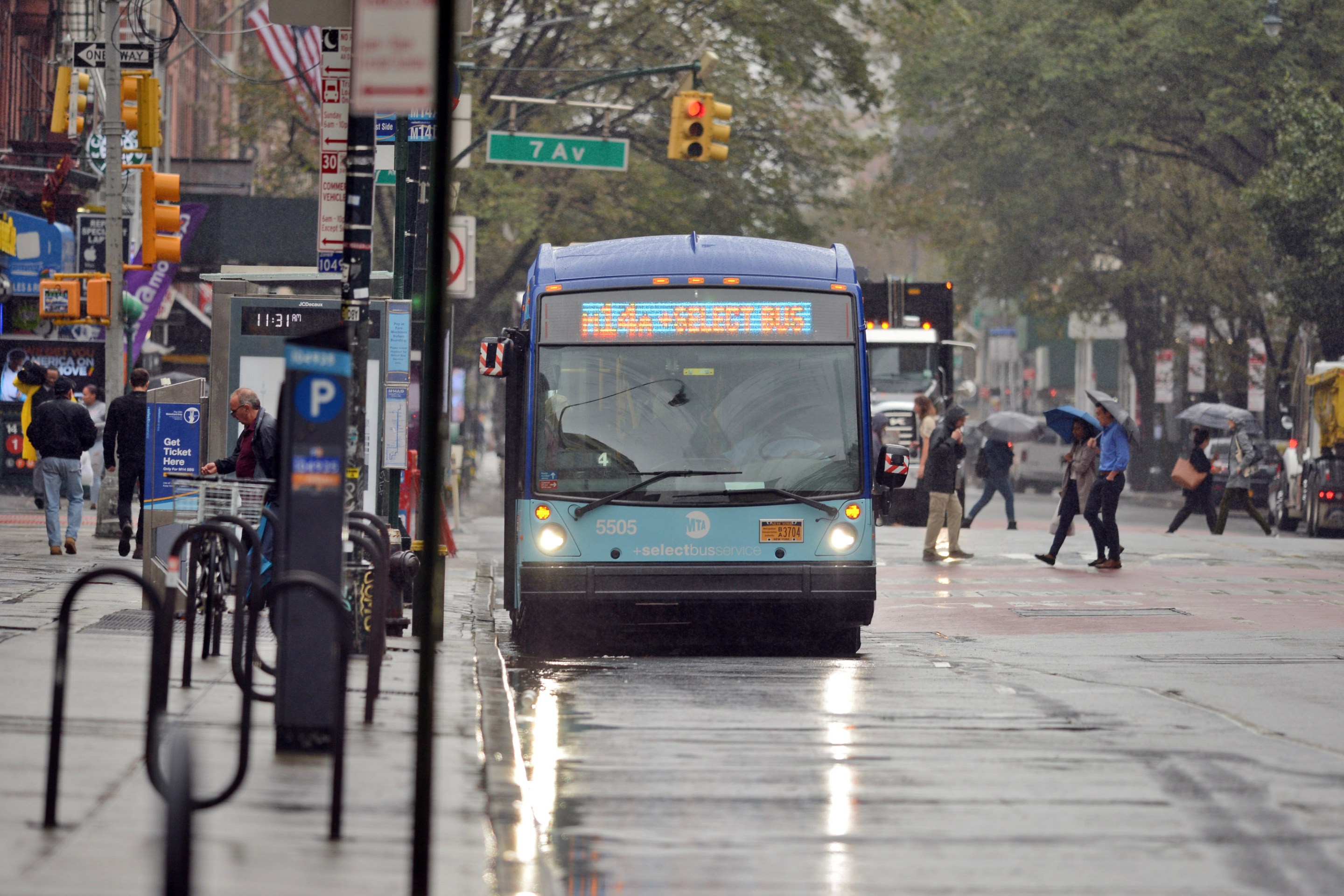It's warp speed for faster trains.
The MTA is exploring ways to fix an infamous chokepoint that slows trains entering and exiting Brooklyn via the Manhattan Bridge, issuing an earlier-than-expected request for companies to tell the agency how to untangle the DeKalb interlocking, one of the most stress-inducing track jumbles in the entire subway system as part of an upcoming signal upgrade going to contract later this year.
As the MTA prepares to put out a contract to do the work of upgrading subway signals on the B/D/F/M trains in Queens and Manhattan (known as the Sixth Avenue and 63rd Street lines), the request for information seeks "industry feedback and ideas for modernizing the signal and train control system ... that could be completed during the communications-based train control train control project on the Sixth Avenue/63rd Street lines."
At the DeKalb interlocking, trains are thrust into a complicated dance that inevitably slows them to a crawl. Manhattan-bound Q trains have to merge with tracks that also carry N trains, and cross tracks carrying the D train to the south side of the bridge. Brooklyn-bound B trains need to cross tracks carrying the N train, and merge onto tracks carrying the Q train. Here's a chart; try not to go crazy while you look at it.
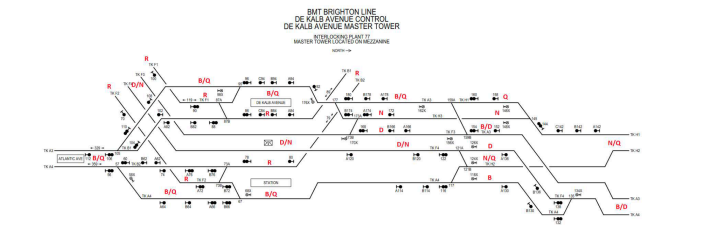
This dance is performed without computerized signals, and instead relies on nearby MTA employees in a signal tower with deliriously out-of-date technology who keep track of where the trains are at all times and ensure the tracks are in place to move each train to the place it needs to go.
It's a less-than-ideal state of affairs, which is why the MTA made a lot of hay out of its plans to upgrade the interlocking as part of the signal upgrades on the N/Q/R/W from Astoria to Brooklyn in the 2025-2029 capital plan (and if you're thinking, "Hey isn't there another notorious messed up Brooklyn train interlocking that slows everything down that's getting fixed in this capital plan?" yes there is, it's in Central Brooklyn) .
Per the request for information, there are two possibilities that would allow the MTA to move up the timeframe for the work of upgrading the DeKalb interlocking while it also does the other signal upgrades: either by installing signals for communications-based train control (which everyone calls CBTC) or by using a slightly older, but still computerized, signal system known as automatic train supervision (which everyone calls ATS even though we hate initials here at Streetsblog).
Installing CBTC on that jumble of tracks would bring an added bonus for riders by extending the new signal coverage on the B and D trains from its current planned endpoint at Broadway-Lafayette all the way across the Manhattan Bridge.
Upgrading the interlocking to CBTC earlier than upgrading signals on the N/Q/R/W lines does have one major operational challenge though: N and Q trains that aren't equipped for modern signals would still need to go through the DeKalb interlocking, and would be moving from tracks with older fixed-block signals before the interlocking, then to tracks with CBTC signals on a short trip through the interlocking and then back to fixed-block signals after the interlocking. Because of that, the MTA is also exploring a second idea to upgrade the switches that would act as a kind of stopgap measure.
The second possibility for the upgrade is to install computerized track-switching controllers that rely on automatic train supervision, which is a more high-tech way to keep track of where trains using fixed-block signals are and is currently in-use on the subway's lettered lines. Crucially, the ATS system would be able to automatically put switches into place, which means that even that version of the interlocking upgrade would ensure that the tower operators currently doing the work by hand would no longer need to set the tracks in position. It's a lighter touch, but one that could be more feasible to keep running train service through the series of switches until the full N/Q/R/W signal upgrade project is finished.
Answers to the RFI, which was issued in late July, are due by Aug. 28, a short time frame that MTA executives say demonstrates how seriously the agency is taking the possibility of getting the project into the upcoming signal work on the Sixth Avenue and 63rd Street lines.
"The main reason we put this out now with such urgency was to make sure we have the most cost-effective scope for the Sixth and 63rd project," said Sean Fitzpatrick, the deputy chief of staff at MTA Construction and Development. "This way, if we determine it is the best path, we can include it in the contract from the start when it's fastest and cheapest to do so."
